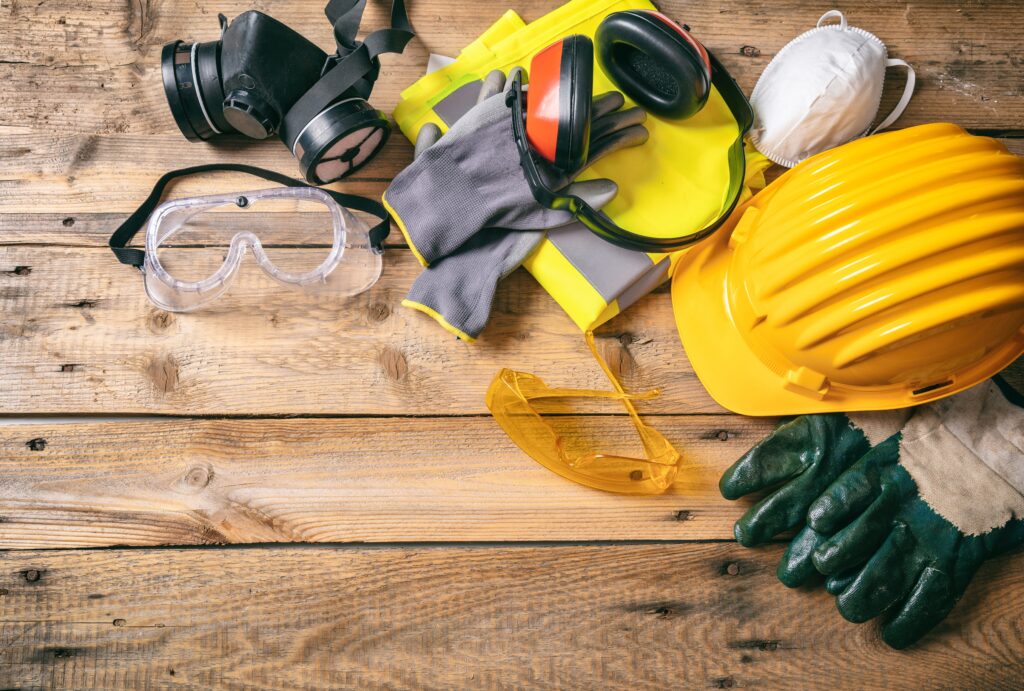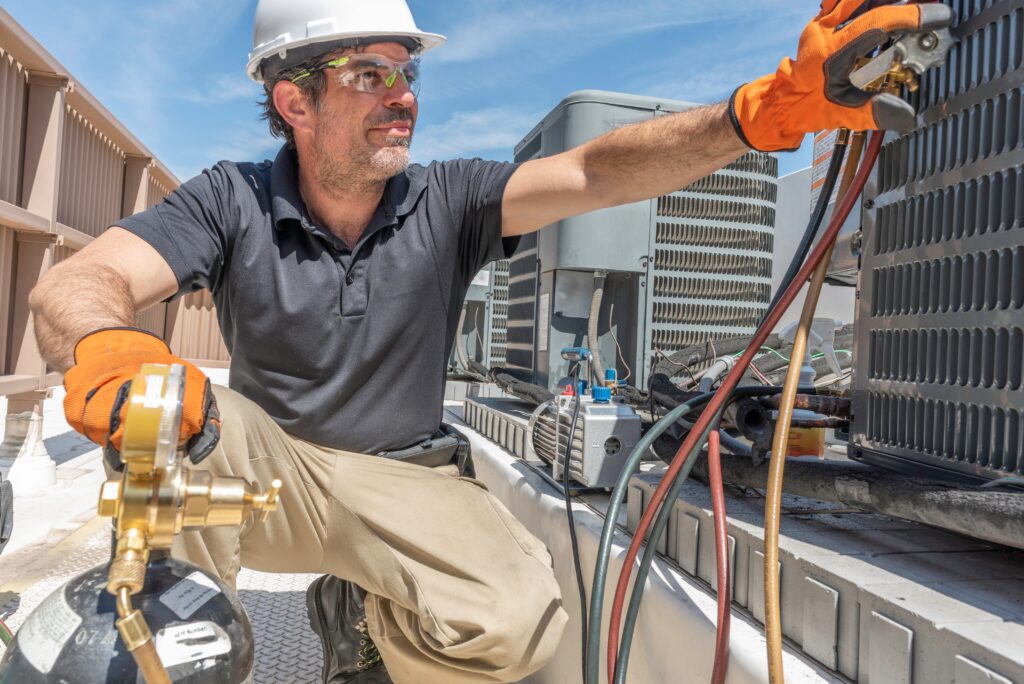8 Best HVAC PPE for the Job

HVAC personal protective equipment not only safeguards your health but preserves the senses so that your eight hours on the job don’t rob you of a lifetime off of it. That’s why it is of paramount importance to plug your ears, shield your eyes, cover your skin and otherwise protect yourself with the best HVAC PPE the market has to offer.
What is PPE in HVAC?
PPE in HVAC includes thick gloves, goggles, boots, hard hats and other safety gear that protects technicians from bodily harm caused by onsite chemical, electrical, physical, biological and gaseous exposures.
Best HVAC PPE Checklist & Safety Tips
1. Gloves
Gloves can feel like a bulkier second skin that makes holding tools awkward and the job more cumbersome, which is why many technicians neglect to don this vital piece of safety equipment. But they can protect you from electrical shocks, abrasions, and chemical burns caused by refrigerant leaks when disconnecting gauges or hoses.
Technicians should wear comfortably fitted gloves that are cut-resistant, rubber insulated and/ or chemical-withstanding when working on HVAC systems or with electrical hazards.
2. Long Sleeved Shirts & Pants
Because air conditioning units are conveniently–or not so conveniently– located outside of buildings and homes, HVAC specialists spend a lot of their time outdoors. In just 5-10 minutes (less for fair-skinned people), your skin will start to experience the damaging effects of UV radiation.
To protect your skin, you should wear light-colored, long-sleeved shirts and pants with a UPF rating, even in the summer. Along with long sleeve clothing and protective overalls, be sure to slather sunscreen on all exposed skin and reapply every two hours. And don’t forget to stay hydrated! Water is perhaps the best HVAC PPE out there for preventing medical emergencies.
3. Face Shield or Safety Goggles
Flying debris, fumes, chemicals, splash hazards and particles are all onsite dangers that could potentially cause an eye injury resulting in complete or partial loss of vision. The most important thing is to get safety glasses that are fitted to your face and graded for impact resistance. Below are types of eye protection for HVAC employees:
- Glasses – You can find glasses with added side protection and filter lenses that also work in a fog-free and anti-scratch capacity.
- Goggles – If you’re someone who wears corrective lenses, goggles might be the best HVAC PPE for your eyes, as they comfortably slide over glasses.
- Face Shields – Depending on the demands and dangers of your job, your employer might require you to wear a face shield over your protective glasses or goggles for additional protection.

4. Hard Hat
It might not always seem necessary for HVAC technicians to wear a hard hat for anything short of installing an air conditioner on a construction site. But the truth is, HVAC technicians should always wear a hard hat even when servicing home and commercial units. They don’t just protect noggins from bumps and bruises, they can save them from a concussion–or worse–in the event of falling, flying, or low-hanging objects and electrical shock.
5. HVAC Work Boots
Speaking of falling objects, it’s a good idea to protect the little piggies and buy a pair of steel-toed, EH (electrical hazard) shoes. Not only does the steel toe protect HVAC workers from heavy objects, such as, let’s say a dropped cordless drill, but the insulated rubber sole prevents the technician from accidentally completing the circuit with their body.
To ensure that the HVAC boots stay the best HVAC PPE, you should:
- Routinely check the soles for wear
- Inspect the bottoms for embedded metal debris before every job
- Completely replace HVAC boots every 6-12 months
6. Respirators
One of the best HVAC PPE to keep you breathing easy is a respirator. Any particles airborne by sawing, spraying, movement, evaporation, etc. can be inhaled, causing injury, disease and sometimes permanent damage to your lungs.
To circumvent the risk altogether, HVAC technicians wear respirators to safeguard against refrigerants, gasses, vapors and other harmful air contaminants. When putting on a facemask, it’s your job to ensure a proper fit, taking care that there are no gaps around the mouth and nose that breaks the seal.
7. Ear Plugs
Do you use a power tool when servicing an HVAC unit? Or work around equipment 70 decibels or louder? You’ll want to stop up those ears with ear plugs or ear muffs rated 85 decibels or higher. In fact, OSHA requires employers to provide employees with hearing protection if they are exposed to noises louder than 85 decibels in an 8-hour time-weighted period.
8. Reliable HVAC Tools
Purchasing high-quality HVAC equipment is just as critical as the gear you wear on your body. Reliable tools, such as sharp wire cutters, a stable ladder and a multimeter that is routinely calibrated per the manufacturer’s recommendations, are just as vital to wearing the proper HVAC PPE when practicing electrical safety.
What PPE Should Technicians Always Wear When Handling Refrigerants?
When handling refrigerants, technicians should protect their skin, eyes and lungs with chemical-resistant gloves, goggles and respirators. The most prominent dangers related to refrigerants are toxicity, flammability and asphyxiation. You should always ensure you’re working in a well-ventilated space free of any ignition sources.
